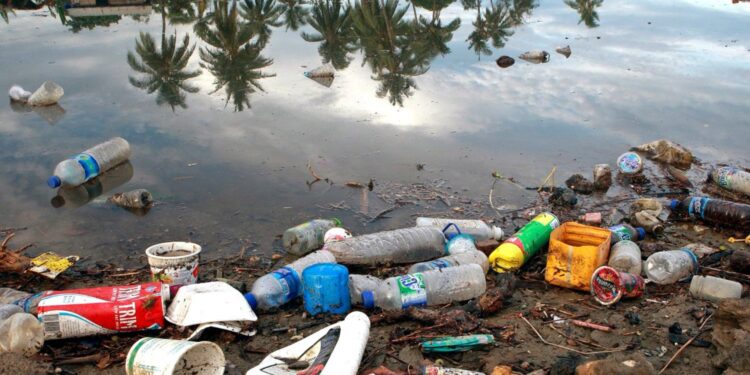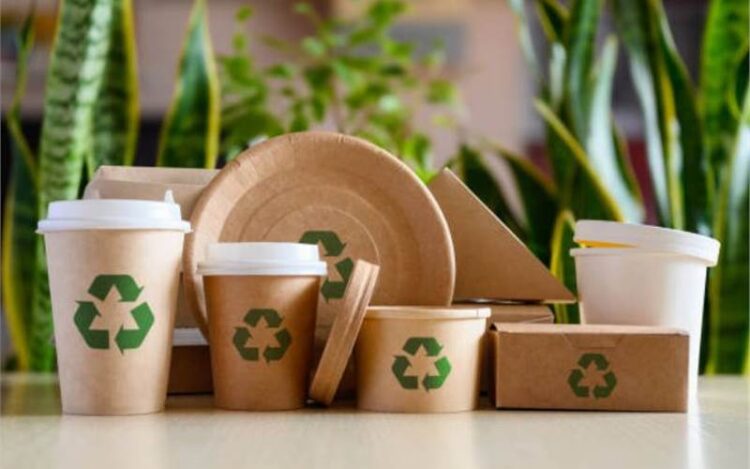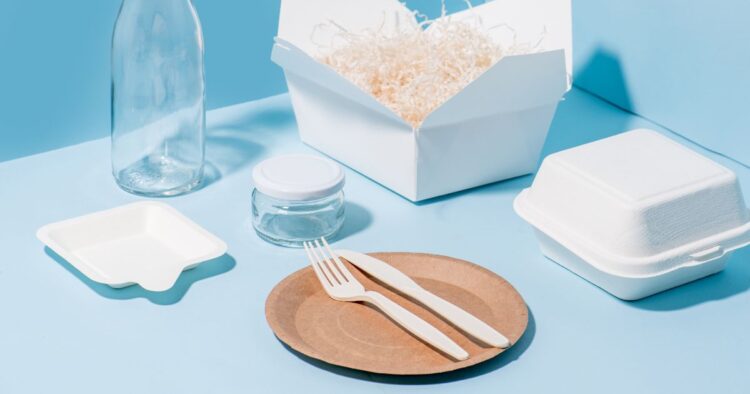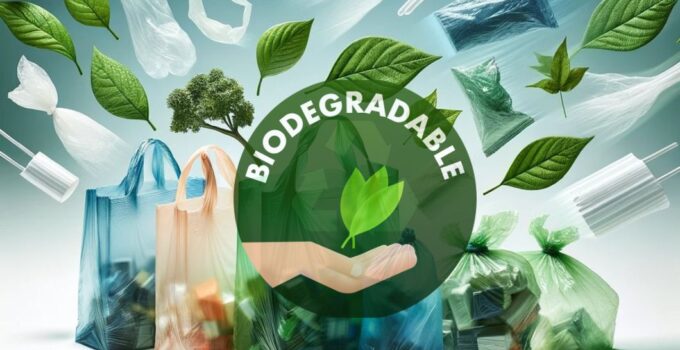Plastic waste has become one of the most pressing environmental issues of our time. Around the world, plastic pollution is evident in overflowing landfills, littered landscapes, and floating islands of trash in our oceans. This synthetic material, which seemed like a miracle innovation just decades ago, is now a growing ecological nightmare. The vast majority of plastics are made from petroleum, take centuries to degrade, and wreak havoc on wildlife and ecosystems. Clearly, our reliance on conventional plastic is unsustainable.
But what if we could have plastic that just disappears when disposed properly, decomposing back into the earth? That is the promise of biodegradable plastic. Made from renewable plant materials instead of fossil fuels, biodegradable plastics provide the versatility of traditional plastics while being far less environmentally harmful. These bioplastics break down within months or years through exposure to heat, microbes, and other natural processes.
As concern grows over plastic waste, biodegradable plastics present a compelling solution to change our relationship with this ubiquitous material. The time has come for a massive shift toward renewable, compostable bioplastics that don’t persist for generations after a single use.
Table of contents
- Why Conventional Plastics Are So Problematic Today
- What are the Benefits of Biodegradable Plastics
- Types of Biodegradable Plastics That Should Be Used
- Applications Where Biodegradable Plastics Excel
- Final Word
Page Contents
Why Conventional Plastics Are So Problematic Today

Source: cls-media.ru
The vast majority of plastics today are derived from petroleum, making them inherently unsustainable. Petroleum is a finite fossil fuel whose extraction and processing causes extensive environmental damage. Furthermore, plastic made from petroleum does not biodegrade quickly. Most conventional plastics can persist for decades to centuries before finally breaking down.
This extreme persistence means plastics accumulate in the environment at staggering rates. Plastics litter cities, countryside landscapes, beaches and the oceans. It is estimated over 8 million tons of plastic waste enters the oceans each year. Plastic waste chokes wildlife, entangles sea creatures, and clogs the stomachs of marine animals who mistake it for food. The ubiquitous plastic pollution also leaches toxic chemicals as it degrades.
Plastic that ends up in landfills can take up to 1,000 years to decompose. In the meantime, it takes up valuable space while also emitting potent greenhouse gases like methane and ethylene as it slowly breaks down. This contributes to global warming in addition to the climate impact of extracting and refining petroleum to make the plastics in the first place.
In short, conventional plastics generate pollution from production to disposal. Their extreme durability that once seemed like an asset has proven to be an environmental catastrophe. We clearly need better alternatives if we want to preserve our planet for future generations.
What are the Benefits of Biodegradable Plastics
Unlike conventional plastics, biodegradable plastics are derived from renewable plant sources like corn, sugarcane, and potato starch. This gives them a major sustainability advantage over petroleum-based plastics. As plants grow, they absorb carbon dioxide from the atmosphere, partially offsetting the emissions from manufacturing bioplastics.
The most important advantage of biodegradable plastics is that they break down much faster after disposal. Whereas petroleum plastics can take centuries to decompose, biodegradable plastics can fully biodegrade in months to a few years under the right conditions. The microbes and enzymes in places like compost piles and landfills turn bioplastics into organic matter.
When biodegradable plastics are composted, they produce valuable fertilizer and compost to nourish soils. This gives them an additional sustainability benefit. Compostable bioplastics close the loop in circular economies by turning waste into resources.
Widespread use of biodegradable plastics has the power to drastically reduce plastic waste accumulation in the long run. With less permanent plastic entering and persisting in ecosystems, we can reduce plastic pollution on land and sea.
Lastly, biodegradable plastics have a lower carbon footprint overall than conventional plastics. The plant sources require less processing than crude oil. And bioplastics’ relatively rapid decomposition at the end of life prevents methane emissions from persistent plastic waste in landfills.
Types of Biodegradable Plastics That Should Be Used

Source: linkedin.com
There are several major types of biodegradable plastics, each with their own advantages:
- PLA – PLA stands for polylactic acid. It is made from fermented plant sugars from sources like corn starch, sugarcane, or tapioca roots. PLA can produce clear, rigid plastics for uses like food containers and utensils. It biodegrades within 6 months to 2 years in industrial composting facilities.
- PHA – PHA stands for polyhydroxyalkanoates. These are plastic polyesters produced by bacterial fermentation of plant oils or sugars. PHA is more flexible and resilient than PLA. It biodegrades in 1-5 years in soil, home composts or marine environments.
- Starch-based – Bioplastics can also be made directly from starches like potato, corn, cassava or wheat using heat, pressure and non-toxic catalysts. These produce plastics that are heat-sensitive but biodegrade within months to a year.
- Fibre-reinforced – Mixing plant-based fibres like jute, hemp or flax with bioplastics adds strength and biodegrades readily when composted. The fibres can aid the growth of biodegrading microbes.
These varied bioplastic materials allow the manufacture of food packaging, containers, cutlery, bags, agricultural films and more that meet performance needs while biodegrading completely. As technology advances, even more types of biodegradable bioplastics will emerge.
Applications Where Biodegradable Plastics Excel

Source: linkedin.com
Biodegradable plastics are particularly well-suited to disposable food packaging and service items. Bioplastic bags, containers, straws, and utensils can provide the same functionality as conventional plastic while fully decomposing after use. Compostable bioplastic packaging is already available for everything from sandwiches to microwave meals.
Agriculture is another promising application. Biodegradable mulch films enhance crop growth and decompose right in the soil after harvest. Drip irrigation tubing, plant clips and ties made from bioplastic also break down into natural compounds that nourish plants. Using biodegradable plastics reduces plastic waste contamination of farmland.
Biodegradable plastics can also be manufactured into textile fibres for clothing and fabrics. Apparel made from bioplastic fibres like PLA and modal offer sustainability benefits over synthetics like polyester. The bioplastic fibres minimize microfiber pollution from washing and can even be commercially composted at the end of life to make fertilizer.
As material innovations continue, biodegradable plastics will unlock more applications. Anytime plastic is only needed temporarily, biodegradable alternatives prevent that plastic from persisting in the environment indefinitely This makes bioplastics ideal for food, agriculture, textiles and other industries generating plastic waste.
Final Word
The plastic waste crisis is an unfortunate consequence of decades of designing materials that defy nature. But we now have the solutions to change course. Biodegradable plastics offer the properties and performance we need, while matching natural cycles and breaking down harmlessly when disposed of properly.
This is not about getting rid of plastics altogether, but about innovating smarter versions that work with the environment rather than against it. The technology already exists – we just need the will and initiative to implement it. This requires all of us – individuals, businesses and governments – to demand better options.
With the right incentives and infrastructure, biodegradable plastics can become the norm rather than the exception. Composting and recycling programs specifically designed for bioplastics will ensure their proper disposal. As more companies like Polystar Plastics start using bioplastics, economies of scale will make this sustainable option cost-competitive with traditional plastics.
Biodegradable plastics pave the way toward a more thoughtful, circular materials economy. What seems like a monumental transition can happen through small, consistent choices to support renewable, compostable options.




